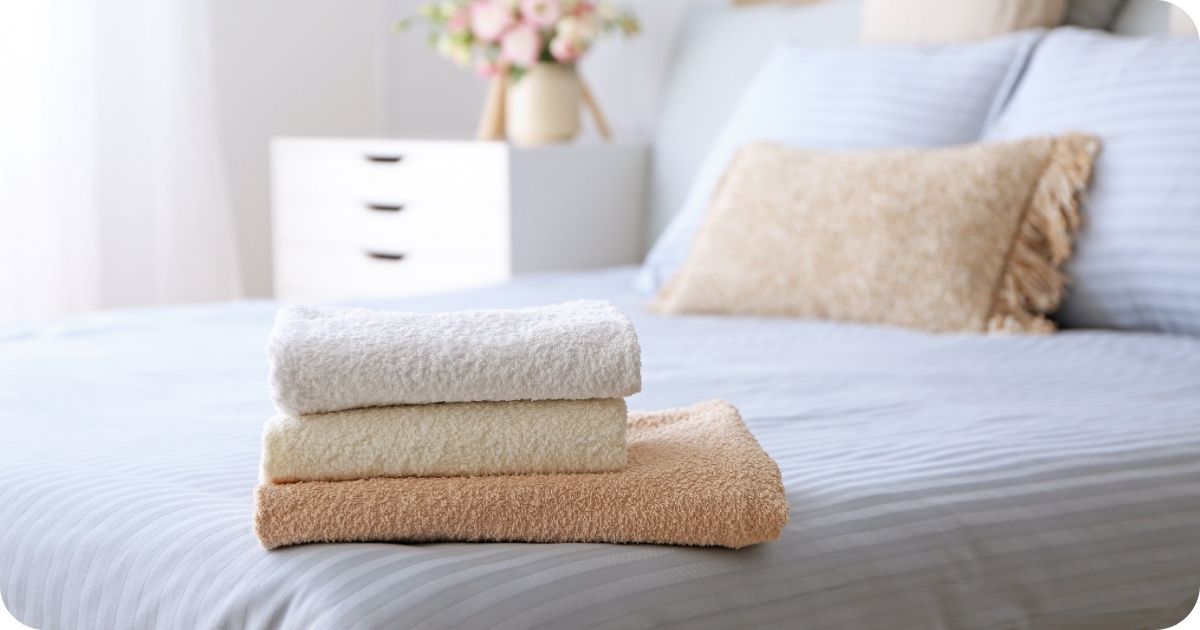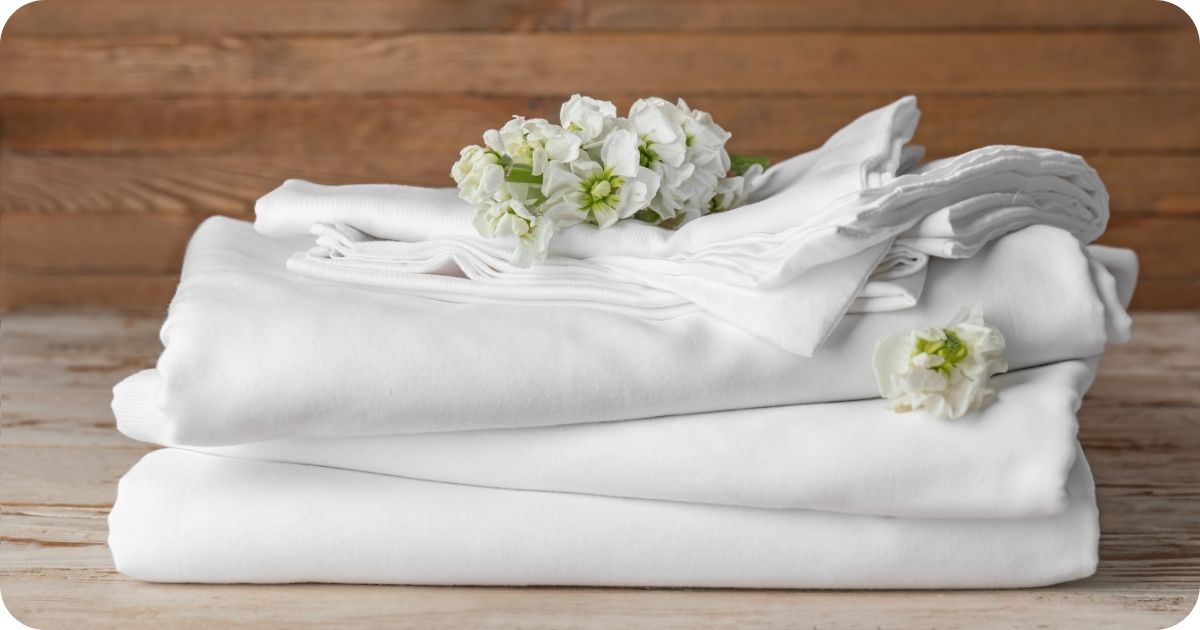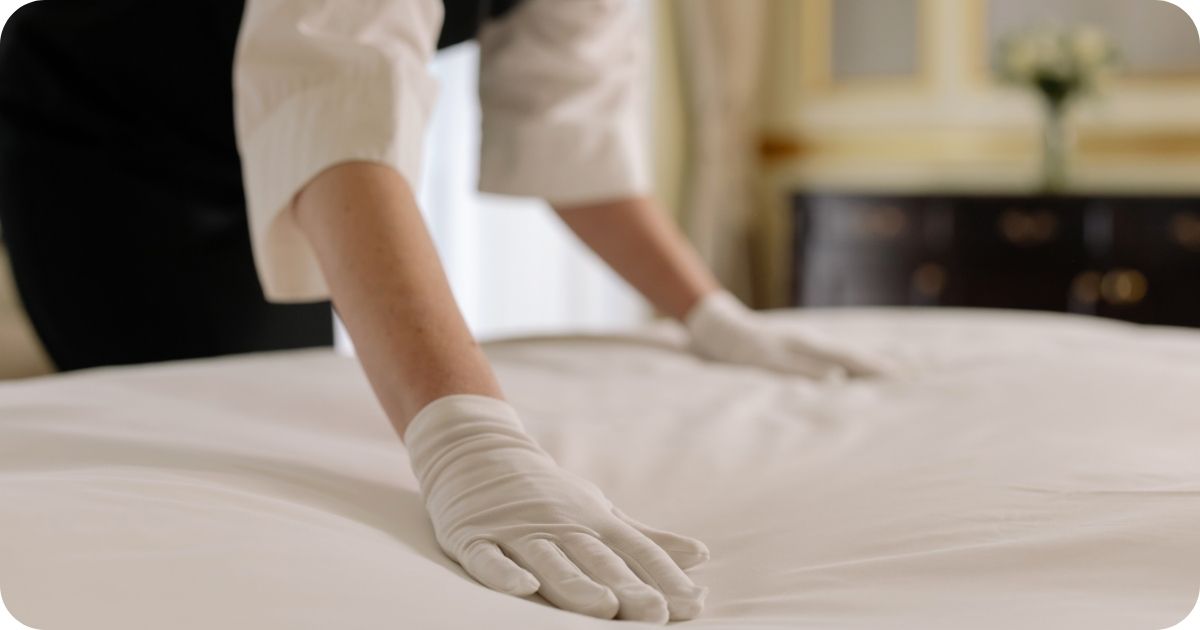The Importance of Hypoallergenic Bedding in Hospitality
In today’s hospitality landscape, guest expectations have evolved well beyond luxury and convenience. Travellers are increasingly prioritising health and wellbeing — and that includes the quality of sleep they receive during their stay. For many guests, allergies and sensitivities can turn what should be a restful night into an uncomfortable ordeal.
One of the most overlooked yet impactful contributors to guest satisfaction is bedding. Traditional hotel bedding can harbour dust mites, mould spores, and other allergens that trigger reactions in sensitive individuals. This not only affects the comfort of the guest but also influences reviews, repeat bookings, and overall brand perception.
By investing in hypoallergenic bedding, hotels and accommodation providers can significantly enhance their guest experience. It’s a proactive step toward cleaner, safer, and more inclusive hospitality. In this article, we’ll explore what hypoallergenic bedding is, why it matters, and how you can incorporate it into your rooms to stay ahead in a competitive industry.

1. Understanding Hypoallergenic Bedding
1.1 What Does 'Hypoallergenic' Mean?
The term hypoallergenic refers to products designed to minimise the risk of allergic reactions. In the context of bedding, it means materials and construction methods that actively resist common allergens such as dust mites, mould, mildew, and pet dander. Hypoallergenic bedding is crafted to create a cleaner, safer sleeping environment — ideal for those with allergies, asthma, or sensitive skin.
1.2 Common Allergens Found in Hotel Bedding
Even in the cleanest hotel rooms, traditional bedding can accumulate allergens over time. The most common culprits include:
- Dust mites: Microscopic insects that thrive in warm, humid environments and feed on skin flakes.
- Mould and mildew: Caused by moisture build-up in mattresses and pillows, particularly in poorly ventilated rooms.
- Pet dander and pollen: Carried in on guests’ clothes or luggage, these allergens can settle in bedding fabrics.
- Harsh chemicals: Some synthetic materials and cleaning agents can trigger skin irritation or respiratory issues.
These allergens can lead to sneezing, congestion, itching, or even full-blown allergic reactions — all of which can ruin a guest’s stay.
1.3 Who Benefits from Hypoallergenic Bedding?
Hypoallergenic bedding isn't just for guests with diagnosed allergies. It benefits a wide range of people, including:
- Asthma sufferers, who are particularly sensitive to dust and airborne irritants.
- Travellers with eczema or sensitive skin, who may react to rough fabrics or chemical residues.
- Families with young children, where cleanliness and health are paramount.
- Guests seeking wellness-focused stays, who are drawn to hotels that offer clean, allergen-free environments.
By catering to these groups, hotels can show they genuinely care about the comfort and wellbeing of every guest — not just the average traveller.
2. Why Hypoallergenic Bedding Matters in Hospitality

2.1 First Impressions and Guest Comfort
The quality of a hotel room’s bedding is one of the first things guests notice — and one of the last they remember. Fresh, crisp sheets and pillows that don’t trigger sneezing or itching make for a far more welcoming experience. Hypoallergenic bedding not only enhances comfort but also helps ensure that a guest’s first impression is positive, encouraging a restful night from the moment they check in.
2.2 Reducing Complaints and Increasing Positive Reviews
Allergy-related discomfort is a surprisingly common cause of negative feedback in hotels. Guests suffering from itchy eyes, runny noses or skin irritation are far less likely to leave a positive review, regardless of how well other aspects of their stay went. Hypoallergenic bedding helps to eliminate a key trigger of such complaints, reducing refund requests, late-night housekeeping calls, and poor online ratings.
2.3 The Growing Demand for Wellness-Focused Stays
Wellness tourism is on the rise, with travellers actively seeking out accommodation that prioritises health, hygiene and overall wellbeing. From in-room air purifiers to plant-based menus, hotels are adapting to meet this shift — and bedding is no exception. Offering hypoallergenic bedding shows a commitment to guest wellness, positioning your hotel as modern, health-conscious, and ahead of the curve.
3. Features of Hypoallergenic Bedding
3.1 Anti-Allergy Materials
At the heart of hypoallergenic bedding is the material itself. Natural fibres such as cotton and bamboo are popular choices due to their breathability and resistance to allergens. Synthetic options like microfibre can also be effective, particularly when tightly woven to create a barrier against dust mites. Some bedding is also treated with anti-microbial or anti-allergy finishes that prevent the build-up of allergens over time.
3.2 Breathability and Temperature Regulation
One of the key contributors to allergen growth — especially dust mites and mould — is excess moisture. Hypoallergenic bedding materials are designed to wick away moisture and improve airflow, helping to regulate body temperature and reduce the damp conditions that allow allergens to thrive. This not only benefits allergy sufferers but also enhances overall guest comfort.
3.3 Easy Maintenance & Washability
Bedding that’s easy to clean is crucial in a hotel setting. Hypoallergenic products are typically designed to withstand frequent, high-temperature washing — a key factor in killing dust mites and removing allergens. Many also dry quickly, which helps prevent mould and mildew from forming in storage or during turnaround.
For hotels, this means fewer long-term hygiene concerns and an easier job for housekeeping teams.
4. How to Incorporate Hypoallergenic Bedding in Your Hotel

4.1 Upgrading Pillows, Duvets, and Mattresses
Start by assessing your core bedding items. Opt for pillows and duvets made with anti-allergy fillings, such as hollowfibre or microfibre, and encased in tightly woven covers. When it comes to mattresses, consider hypoallergenic models that resist dust mites and are easy to clean — like those available in our waterproof and anti-allergy contract mattress range.
These upgrades not only improve hygiene but also extend the lifespan of your bedding by preventing allergen build-up over time.
4.2 Choosing the Right Bedding Protectors
Mattress and pillow protectors are an affordable yet highly effective way to improve allergy protection. Look for options that are:
- Waterproof but breathable – to protect against spills without trapping heat.
- Dust mite resistant – using zippered encasements or anti-allergy fabrics.
- Machine washable – allowing for frequent laundering to hotel hygiene standards.
These protectors add a crucial layer of defence without compromising on comfort.
4.3 Staff Training & Housekeeping Best Practices
Even the best bedding can’t do its job if it’s not cared for properly. Train housekeeping teams on:
- Washing hypoallergenic bedding at high enough temperatures (usually 60°C or above) to eliminate allergens.
- Rotating and airing mattresses and duvets regularly.
- Avoiding cross-contamination by separating allergy-friendly bedding during laundering and storage.
A clear housekeeping protocol ensures that your investment in hypoallergenic products is maintained for the long term.
5. Marketing the Hypoallergenic Advantage
5.1 Use it in Your Hotel’s USP
If your rooms feature hypoallergenic bedding, don’t keep it quiet. Highlight it as part of your unique selling proposition (USP). Guests with allergies or sensitivities will specifically seek out accommodation that promises a healthier night’s sleep. Include clear references to hypoallergenic bedding on your website, booking confirmations, and in-room literature.
Phrases like “allergy-friendly rooms”, “hypoallergenic bedding for a cleaner sleep”, or “breathe easy stays” can help differentiate your hotel from the competition.
5.2 Promote in Online Listings and Booking Sites
Online travel agents (OTAs) and booking platforms often allow hotels to specify amenities and features — make sure “hypoallergenic bedding” is ticked where available. You can also mention it in the room descriptions, especially for premium or wellness-themed rooms.
It’s a small detail that can make a big difference when guests are choosing between similar properties.
5.3 Appealing to Corporate, Family, and Wellness Travellers
Different guest segments place a high value on cleanliness and comfort:
- Business travellers want uninterrupted, restful sleep before meetings.
- Families with children are highly alert to allergy risks.
- Wellness-conscious guests seek out healthy, rejuvenating experiences.
By marketing your hypoallergenic offering directly to these groups, you tap into a growing demand and increase booking appeal across multiple demographics.
Final Thoughts
In a competitive hospitality market, attention to detail can make all the difference — and few details are as impactful as the bedding you provide. Hypoallergenic bedding offers more than just comfort; it provides peace of mind, better sleep, and a healthier environment for every guest, especially those with allergies or sensitivities.
By upgrading to anti-allergy materials, improving maintenance practices, and promoting these features effectively, your hotel can enhance its reputation, reduce complaints, and attract a broader range of guests — from wellness-focused travellers to families and corporate clients.
At HotelContractBeds, we offer a range of hypoallergenic, waterproof and contract-grade mattresses and bedding designed specifically for the demands of the hospitality industry. Explore our collection today and take a step toward cleaner, more comfortable stays for your guests.




